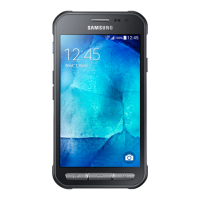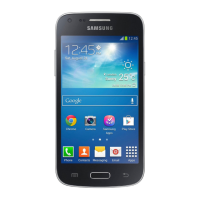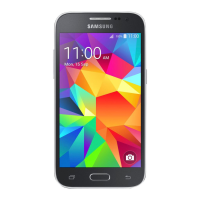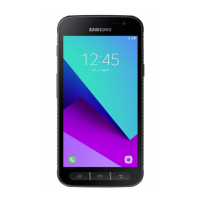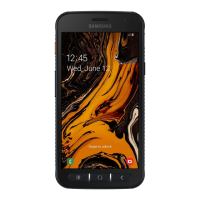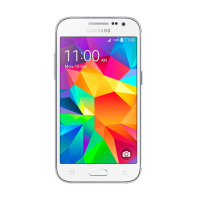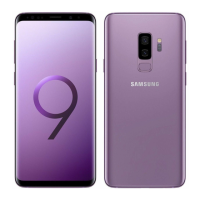Do you have a question about the Samsung SM-G386W and is the answer not in the manual?
Explains symbols used in the manual for warnings, cautions, and notes.
Details copyright, usage restrictions, and registered trademarks for the device.
Identifies physical components and describes button functions for basic device operation.
Step-by-step guide for inserting SIM/USIM cards and the battery.
Instructions on battery charging and memory card insertion and usage.
Procedures for powering the device on/off, holding, and locking.
Explains status icons and how to interact with the touch screen and gestures.
Customizing the home screen, adding apps, rearranging items, and managing applications.
Covers keyboard usage, Swype, voice typing, and changing input languages.
Making calls, managing contacts, finding, adding, and organizing them.
Sending and viewing text, multimedia messages, and email.
Using the internet, Wi-Fi, Bluetooth, and managing network connections.
Taking photos, recording videos, and managing media files.
Listening to music and using apps like Memo, S Planner, and Clock.
Configuring Wi-Fi, Bluetooth, NFC, and sharing options.
Adjusting sound, display, wallpaper, lock screen, and easy mode settings.
Managing language, keyboard, Swype, and system preferences.
Using TalkBack for screen reading and voice feedback for visually impaired users.
Configuring and using gestures, magnification, and font size for easier screen interaction.
Addressing problems like unlock codes, touch screen issues, freezes, and connectivity.
Important safety guidelines for device usage, charging, handling, and RF exposure.
Explains symbols used in the manual for warnings, cautions, and notes.
Details copyright, usage restrictions, and registered trademarks for the device.
Identifies physical components and describes button functions for basic device operation.
Step-by-step guide for inserting SIM/USIM cards and the battery.
Instructions on battery charging and memory card insertion and usage.
Procedures for powering the device on/off, holding, and locking.
Explains status icons and how to interact with the touch screen and gestures.
Customizing the home screen, adding apps, rearranging items, and managing applications.
Covers keyboard usage, Swype, voice typing, and changing input languages.
Making calls, managing contacts, finding, adding, and organizing them.
Sending and viewing text, multimedia messages, and email.
Using the internet, Wi-Fi, Bluetooth, and managing network connections.
Taking photos, recording videos, and managing media files.
Listening to music and using apps like Memo, S Planner, and Clock.
Configuring Wi-Fi, Bluetooth, NFC, and sharing options.
Adjusting sound, display, wallpaper, lock screen, and easy mode settings.
Managing language, keyboard, Swype, and system preferences.
Using TalkBack for screen reading and voice feedback for visually impaired users.
Configuring and using gestures, magnification, and font size for easier screen interaction.
Addressing problems like unlock codes, touch screen issues, freezes, and connectivity.
Important safety guidelines for device usage, charging, handling, and RF exposure.
| Model | SM-G386W |
|---|---|
| Announced | 2014, February |
| SIM | Micro-SIM |
| Display Type | TFT capacitive touchscreen, 16M colors |
| Chipset | Qualcomm MSM8926 Snapdragon 400 |
| CPU | Quad-core 1.2 GHz Cortex-A7 |
| GPU | Adreno 305 |
| Card slot | microSD, up to 64 GB |
| Internal Storage | 8 GB |
| RAM | 1.5 GB |
| Video | 720p@30fps |
| Secondary Camera | VGA |
| Alert types | Vibration; MP3, WAV ringtones |
| Loudspeaker | Yes |
| 3.5mm jack | Yes |
| WLAN | Wi-Fi 802.11 b/g/n, Wi-Fi Direct, hotspot |
| Bluetooth | 4.0, A2DP |
| GPS | Yes, with A-GPS, GLONASS |
| NFC | Yes |
| Radio | FM radio |
| USB | microUSB 2.0 |
| Sensors | Accelerometer, proximity, compass |
| Messaging | SMS (threaded view), MMS, Email, Push Email, IM |
| Browser | HTML5 |
| Java | No |
| Colors | Black, White |
| Network | GSM / HSPA / LTE |
| Status | Available |
| Display Size | 4.5 inches |
| Resolution | 480 x 800 pixels |
| Main Camera | 5 MP |
| Features | Geo-tagging, touch focus |
| Battery | 2100 mAh |
| Talk time | Up to 10 h (3G) |

